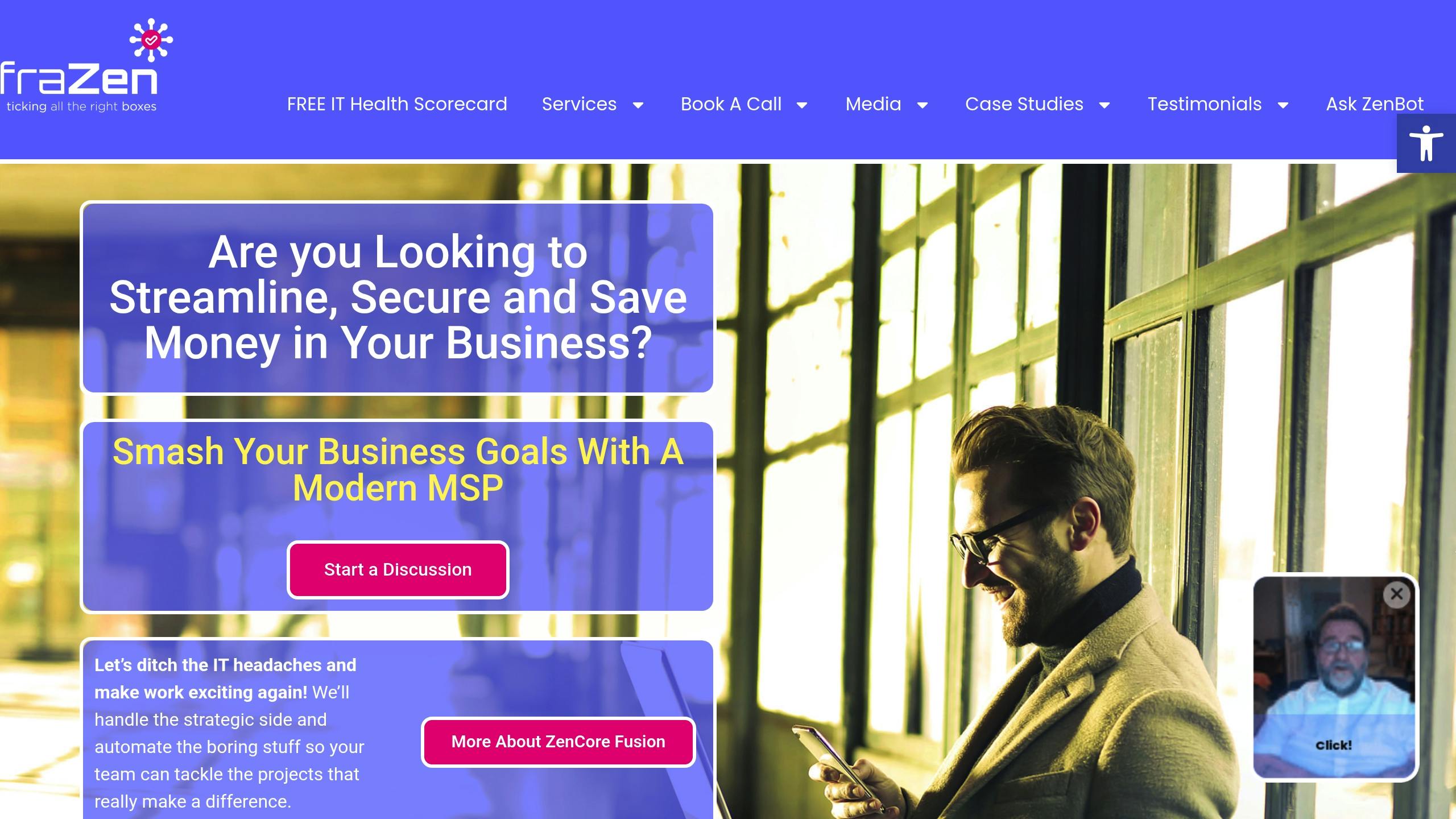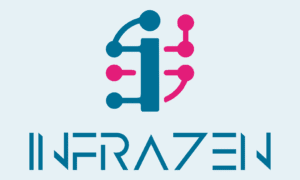Aligning IT KPIs with business goals ensures technology drives meaningful results. Misalignment can lead to wasted resources, inefficiency, and lost revenue, but organizations with strong alignment see 18% higher profit margins. Here’s a quick summary of the steps to achieve alignment:
- Define Business Goals: Identify clear objectives (e.g., revenue growth, customer satisfaction).
- Turn Goals into IT Metrics: Translate goals into measurable KPIs like system uptime or load time.
- Pick SMART KPIs: Ensure KPIs are Specific, Measurable, Achievable, Relevant, and Time-bound.
- Track KPIs: Use tools like APM or AI-based monitoring for real-time tracking and adjustments.
- Review and Update KPIs: Regularly assess and update KPIs to stay aligned with evolving goals.
Step 1: Define Your Business Goals
To ensure everything runs smoothly, start by setting clear business objectives. These goals will guide all the technical decisions that follow.
Outline Your Key Business Goals
Organizing a workshop with stakeholders from different departments can help identify and prioritize your organization’s objectives.
Here’s a simple way to categorize your goals using the Balanced Scorecard approach:
| Perspective | Example Goal |
|---|---|
| Financial | Increase revenue |
| Customer | Improve satisfaction |
| Internal Processes | Lower operational costs |
| Learning & Growth | Enhance productivity |
This framework helps you turn broad business goals into measurable technical metrics.
Link IT Services to Business Goals
For success, IT and business leaders need to work together to connect IT services with these goals. This process involves analyzing how technology supports each objective.
Here are a few examples of how IT can align with business goals:
| Business Goal | IT Service Example |
|---|---|
| Better Customer Experience | AI-driven chatbots |
| Cutting Costs | Automating processes |
| Expanding into New Markets | Cloud-based infrastructure |
Key factors to keep in mind:
- Use data to set realistic goals.
- Review objectives every quarter.
- Check IT capacity to ensure it can meet demands.
Setting solid goals from the start helps avoid common missteps in aligning IT with business needs.
Step 2: Turn Business Goals into IT Metrics
Once you’ve outlined your business goals (Step 1), the next step is to translate them into measurable IT metrics. Here’s a simple three-phase process to make that happen:
How to Convert Business Goals into KPIs
- Link IT capabilities to each goal: Identify the specific IT functions or systems that impact each business objective.
- Set benchmarks: Analyze current performance levels to establish realistic targets.
- Establish tracking protocols: Decide on monitoring tools, reporting frequency, and methods to track progress effectively.
Examples of Business Goals and IT Metrics
Here are some examples to show how strategic goals can translate into technical measurements:
| Business Goal | IT Metric | How It Aligns | Target Value |
|---|---|---|---|
| Boost E-commerce Revenue | Website Load Time | Helps reduce bounce rates | < 2 seconds |
| Improve Operational Efficiency | IT Incident Resolution Time | Minimizes business disruptions | < 4 hours |
| Strengthen Data Security | Security Breach Detection Time | Lowers risk exposure | < 1 hour |
| Speed Up Product Delivery | Development Cycle Time | Reduces time-to-market | < 3 months |
Collaborate with cross-functional teams to validate these metrics. This ensures the chosen measurements are not only relevant but also directly linked to achieving your business goals. By working together, you’ll focus on what truly matters and avoid wasting effort on metrics that don’t drive results.
Step 3: Pick the Right IT KPIs
Use SMART Criteria for Choosing KPIs
Once you’ve turned business goals into metrics (Step 2), the next step is to make sure each KPI follows the SMART framework. This means every KPI should be:
- Specific: Clearly tied to a particular IT function.
- Measurable: Based on concrete, trackable data.
- Achievable: Realistic given available resources.
- Relevant: Aligned with business goals.
- Time-bound: Defined with a clear deadline.
For example, a KPI like “Boost e-commerce uptime to 99.99% within six months to support 15% sales growth” sets a clear, actionable target. It gives IT teams both direction and accountability.
Common Mistakes When Choosing KPIs
Many organizations make avoidable errors when selecting IT KPIs. Here’s a quick breakdown of the most frequent mistakes and how to address them:
| Mistake | Impact on Business | How to Fix It |
|---|---|---|
| Choosing Too Many KPIs | Scattered focus, wasted resources | Stick to 5-7 key metrics per goal |
| Relying on Vanity Metrics | Misleading progress tracking | Prioritize actionable, outcome-driven metrics |
| Ignoring Leading Indicators | Delayed problem-solving | Combine leading and lagging indicators |
| Using Poor Data | Inaccurate performance insights | Confirm data reliability before implementation |
Balancing System KPIs and User Experience KPIs
Good KPI selection requires looking at performance from two angles: system KPIs track infrastructure health, while user experience KPIs measure service quality from the customer’s perspective.
The key is to connect these two. For instance, system metrics like database query response time directly influence user experience metrics like app load time. Faster query responses can lead to better app performance, which can boost user engagement. Aligning these metrics ensures technical improvements translate into real business benefits.
With your KPIs in place, the next step is implementation – but first, watch out for these common pitfalls.
sbb-itb-70a39e2
Step 4: Put KPI Tracking in Place
Now that you’ve defined your SMART KPIs in Step 3, it’s time to set up systems to track them effectively. Here’s how to get started:
Add KPIs to IT Service Delivery
To make KPI tracking part of your IT operations, focus on these three steps:
- Connect KPIs to ticketing systems: Use your ticketing systems to measure and track service performance metrics. This ensures data is collected where the work happens.
- Establish feedback loops: Allow IT staff to share feedback about the relevance of KPIs and suggest adjustments based on their day-to-day experiences.
- Plan regular reviews: Set up consistent check-ins to assess progress and make any necessary updates to stay aligned with your performance goals.
Tools for KPI Measurement
The right tools can make or break your KPI tracking efforts. Here’s a breakdown of some helpful options:
| Tool Type | Primary Function | Business Impact |
|---|---|---|
| Application Performance Monitoring (APM) Tools | Tracks application performance | Helps ensure smooth customer experiences |
| Business Intelligence (BI) Systems | Provides data visualization | Delivers interactive dashboards for insights |
| ITSM Platforms | Manages service tracking | Ensures SLA compliance is on track |
| Infrastructure Monitoring | Monitors system health | Optimizes resource use and minimizes downtime |
Combining these tools into a single, integrated monitoring system can streamline data collection and reporting, ensuring consistency across all IT functions.
AI-Based Monitoring Methods
Artificial intelligence is changing the game for KPI tracking by offering advanced monitoring capabilities:
- Predictive analytics: AI can forecast potential issues and prioritize alerts based on their impact on business operations [1][2].
- Dynamic performance benchmarks: AI adjusts benchmarks automatically by analyzing usage patterns [3].
These features build on the predictive metrics discussed in Step 2, automating responses to keep your systems running smoothly.
“AI-powered KPI monitoring can reduce false alerts by up to 90%” [4]
For the best results, make sure to recalibrate your AI systems every quarter to maintain their accuracy and effectiveness.
Step 5: Check and Update KPIs
After setting up AI monitoring tools in Step 4, it’s time to implement a structured process to regularly review and adjust your KPIs.
Schedule Regular KPI Reviews
Plan quarterly reviews to ensure KPIs remain relevant and aligned with your goals. Focus on two key activities:
- Data Collection and Analysis: Compare data from monitoring tools against your targets and historical trends to identify any gaps or patterns.
- Stakeholder Input: Gather feedback from key stakeholders to evaluate whether KPIs are still aligned with business objectives.
Connect IT Metrics to Business Goals
Show how IT performance directly impacts business results using clear, measurable metrics. For example:
| Business Goal | IT Metric | How It’s Measured |
|---|---|---|
| Faster Product Launches | Deployment Frequency | Lead Time from Code Commit to Production |
This approach helps tie technical performance to broader company outcomes.
Keep a KPI Change Log
Track any updates to your KPIs with a detailed change log that includes:
- Date of modification
- KPI identifier
- Old vs. updated targets
- Reason for the change
- Impact assessment
- Approvals from relevant stakeholders
This documentation supports the SMART criteria outlined in Step 3 by ensuring transparency and accountability as your targets evolve.
Also, set thresholds for performance deviations. These thresholds, combined with predictive analytics from Step 4, help you act quickly when adjustments are needed.
Conclusion: Main Points About IT-Business KPI Alignment
Following these five steps helps organizations keep technical performance in sync with their strategic goals.
Steps IT Teams Can Take Next
- Set up cross-functional teams to improve alignment.
- Schedule quarterly cycles to review and adjust KPIs.
These steps build on the review process outlined in Step 5, ensuring alignment remains a continuous effort.
How InfraZen Can Assist

For small and medium-sized enterprises in North East England needing compliance-focused IT solutions, InfraZen offers its ZenCore Fusion service. This service supports alignment efforts through:
- AI-powered systems for monitoring KPIs
- Frameworks that align technology with business goals
- ROI-driven IT roadmaps
- Tools for tracking security and compliance
- System improvements that prioritize key business KPIs

